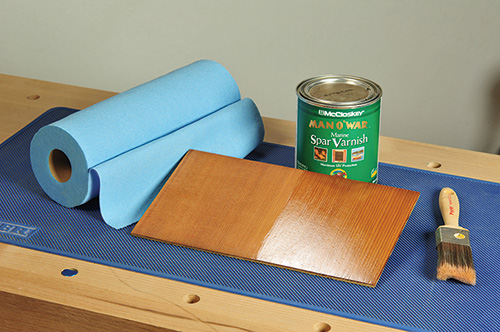
A woodworker is refinishing an old bar that started in New York and ended up in California. It was built circa 1800, and he wants advice on an authentic finish.
Michael Dresdner: The two common clear coatings at that time were shellac and varnish, the latter made from natural resins or gums (congo, copal, pontianac, sandarac, etc.) cooked in oils. Of these two finishes, the former is not really durable enough for a bar, and the latter is no longer easily available. Natural resin varnishes have been replaced by synthetic resin varnishes (alkyds and urethanes).
While shellac will look right, it won’t hold up to hot coffee pots or the tough wear of a bar. Of course, if it is merely a showpiece, go with shellac. Otherwise, choose either a tabletop varnish or a polyurethane. Both will look enough like cooked resin varnish to fool anyone but an expert armed with a test kit. As for them? Simply don’t invite them over to see the piece. I know a bunch of such guys and they make lousy house guests anyway?except for me, of course. You can invite me over and I won’t say a word shy of praise.
Ellis Walentine: The bar was probably finished with some kind of spirit varnish, but I wouldn’t worry about authenticity unless somebody is specifying a particular finish. Modern varnishes can imitate old spirit varnishes in film thickness and sheen, but they have some worthwhile advantages. They last longer and don’t discolor or break down as easily. They’re also more resistant to alcohol and abuse.





